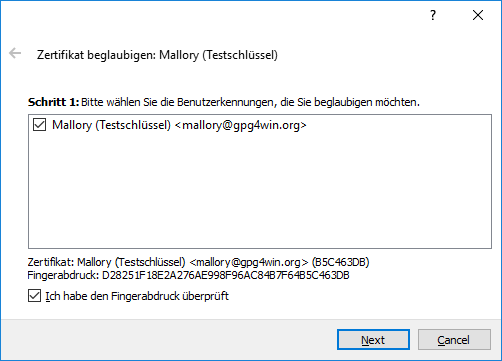

- Gpg suite export kleopatra how to#
- Gpg suite export kleopatra update#
- Gpg suite export kleopatra password#
- Gpg suite export kleopatra free#
# verify the input and get the keygrip (it should be the same) Gpg: key 8715AF32191DB135: secret key imported Gpg: key 8715AF32191DB135: "Brian Exelbierd" 1 new subkey Gpg: key 8715AF32191DB135: "Brian Exelbierd" 1 new signature


Please specify how long the key should be valid. Possible actions for a RSA key: Sign Encrypt Authenticate Add the SSH key as a subkey of your GPG key.# We can remove monkeysphere unless you need it for other reasons $ gpg2 -K -with-keygrip -homedir temp_gpg/ # verify the key loaded and get the keygrip of the new GPG key and the hash of your GPG key Gpg: key 66091F2C70AF02A9: secret key imported Gpg: key 66091F2C70AF02A9: public key "temporary_id" imported ssh/my_fancy_key | gpg2 -import -homedir temp_gpg/ # temporary_id is a temporary identifier required by GPG In a new keyring, import your existing GPG key.The only difference between a typical use of ssh-keygen and this one is the addition of -m to change the format of the key.

Gpg suite export kleopatra password#
You can use this utility to change the password (if you want) and force the key to be rewritten in the older format. If you have a newer style OpenSSH key, convert it using the ssh-keygen utility.The workflow below walks us through these steps.
Gpg suite export kleopatra free#
You don't have to change the password in this situation, so feel free to reuse your existing one if you prefer. You can trigger the conversion by changing the password on the key. This is done by using ssh-keygen and taking advantage of its ability to write in multiple key formats. To import newer keys, you need to convert them into old-style formats. If your key starts with: -BEGIN RSA PRIVATE KEY-, then you have the PEM-encoded format.) (Your key is a newer style key if the first line of the private key file is: -BEGIN OPENSSH PRIVATE KEY. Unfortunately, as of version 0.41, Monkeysphere cannot read newer style OpenSSH keys. Thankfully, you only need to work with the private keys, as you can regenerate the public keys at the end.Īlso, if you have a newer style OpenSSH key, you'll have a couple of extra steps to convert that into something pem2openpgp can read. The keys are identified and operated on by keygrip, and the keygrip for a key is the same whether it is a subkey or a standalone key. This longer process is required because there is no clean way to delete the GPG key in the keyring that is just the SSH key. Unfortunately, making this newly added key a subkey is not a one-step process. The Monkeysphere Project provides a utility, pem2openpgp, that does this for you. To add the key, you need to convert the key format from the Privacy-Enhanced Mail (PEM)-encoded format that SSH uses to an OpenPGP-formatted certificate. Doing this has allowed me to eliminate nine other key files, reducing my backup/privacy footprint a lot. This will eliminate the need for private key files. A way around this is to import your existing SSH keys into your GPG key.
Gpg suite export kleopatra update#
And, if you're like me, you also don't want to have to log into every server you use to update the authorized_keys file. If you're like me, you already have one or more existing SSH keys.
Gpg suite export kleopatra how to#
In the first article in this series, I explained how to use your GPG key to authenticate your SSH connections.


 0 kommentar(er)
0 kommentar(er)
